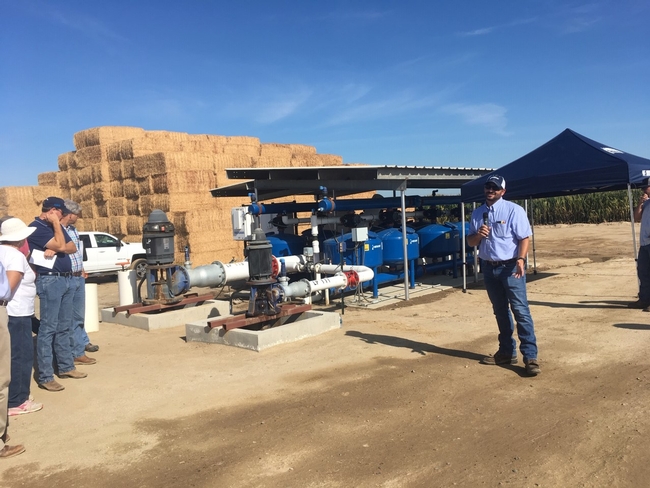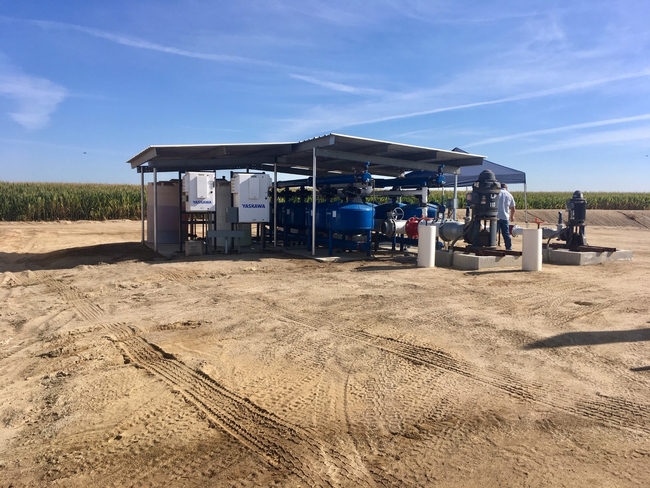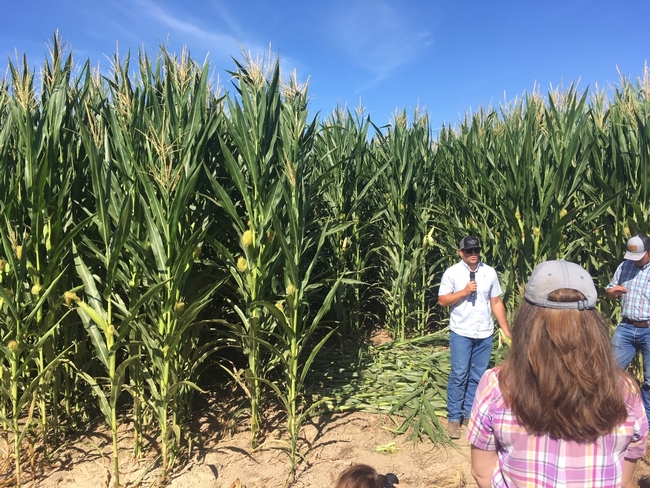Dairies produce lots of milk – and manure. The ingenious dairymen of the Central Valley often use one to produce the other. They grow forage crops like alfalfa and corn that they then feed to their cattle. To provide key nutrients to these crops and deal with the natural waste of a livestock operation, they can spread manure straight onto their fields or they can use effluent water to simultaneously irrigate and fertilize those fields.

To apply that dairy effluent water, many farmers use flood irrigation systems. This is a cheaper, low-tech option, but it can require more ongoing labor and risks overwatering and nitrate leaching.
Subsurface drip irrigation is ideal for many forage crops and can significantly reduce water use, but dairy effluent water tends to clog up these systems.
A recent partnership between the USDA's Natural Resources Conservation Service, Netafim, Sustainable Conservation, and three dairy producers in the Central Valley teamed up to solve this problem. After three years of research and testing, they were able to share their success at two recent field days held on the dairies in Chowchilla and Buttonwillow.
To achieve success, the partners found they needed to customize the systems to each dairy's size and physical layout between lagoons and fields. To prevent clogging, they needed twice as many filters as they'd need for filtering canal or groundwater and they need to be flushed more frequently than other drip systems. But after three years of using and adjusting their system, the managers at DeJager Dairy in Chowchilla reported steady crop yields with significantly lower water use. The best part was the ability to monitor nutrient levels and schedule irrigation sets remotely from the comfort of their office.
At one pilot farm in the Buttonwillow area, the dairyman found that he reduced his water usage from 55 inches per corn crop under flood irrigation to 34 inches under subsurface drip. He also recorded a slight increase in yield. This enabled him to drastically increase the amount of crop he produced per drop of water he used. In addition to the increased water use efficiency, the farmer managed to save on labor costs by automating his irrigation system.
For an added bonus, UC Davis researchers measured a 90% decrease in the emission of nitrous oxide, a potent greenhouse gas.
With all the benefits of this new system comes one significant obstacle for dairymen: high upfront cost. But starting next year, NRCS will cost share up to 75% of the installation price for a limited number of years. Dairymen can also apply for the California Department of Food and Agriculture's Alternative Manure Management Program to help them better separate their solid and liquid wastes.

Climate smart agriculture encompasses management practices that increase soil carbon sequestration, reduce greenhouse gas emissions, improve yields and efficiencies, and promotes climate resilience. The California Department of Food and Agriculture (CDFA) supports three funding opportunities in climate smart agriculture: the Healthy Soils Program, the State Water Efficiency & Enhancement Program, and the Alternative Manure Management Program.
In a collaborative partnership, CDFA and UC Agriculture and Natural Resources have teamed up to support 10 community education specialists throughout the state to provide technical assistance and outreach for the climate smart agriculture programs.
